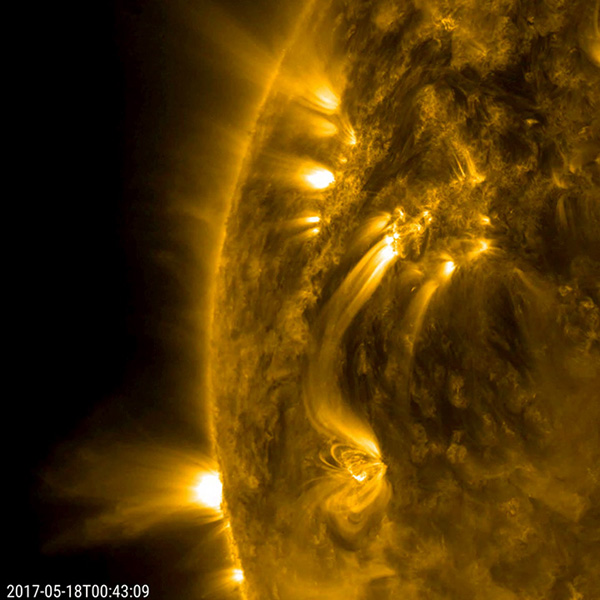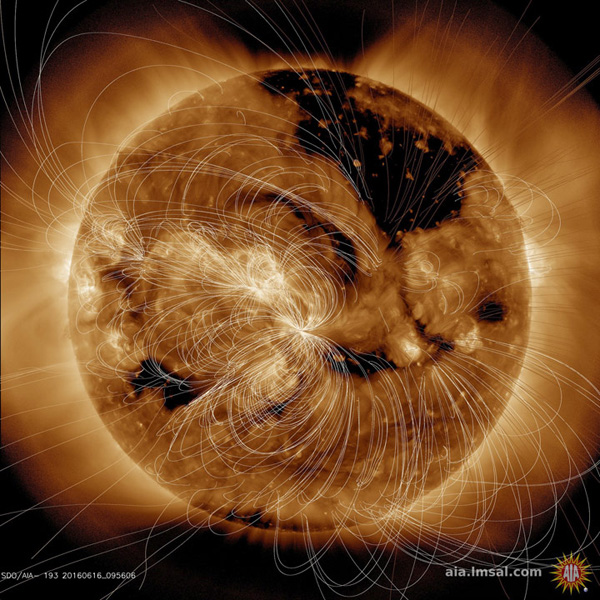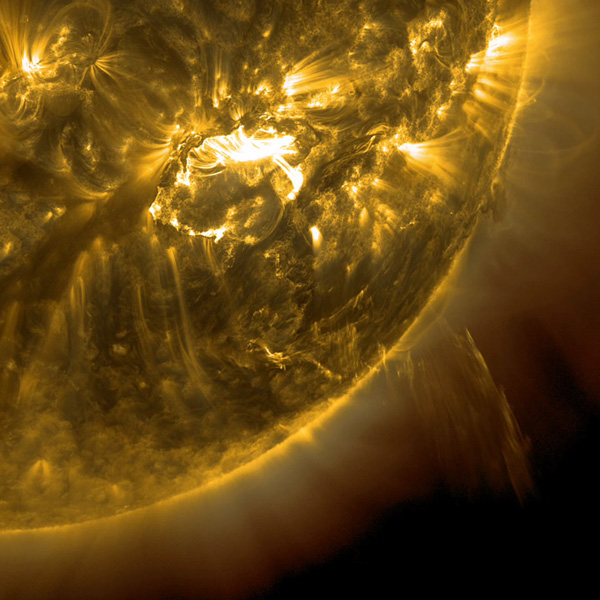このように剛体でないため、太陽は赤道付近の方が高緯度の領域よりも速く自転し、周期は赤道部分で約25日、極近くでは約30日である。 太陽のこの赤道加速型「差動回転」のために、太陽の磁力線は時間とともにねじれていくことになる。 ねじれて変形した磁力線はやがて磁場のループを作って太陽表面から外へ飛び出して、太陽黒点や紅炎(プロミネンス)を作ったり、太陽フレアと呼ばれる爆発現象を引き起こしたりする。 表面現象 |

|
Several bright bands of plasma connect from one active region to another, even though they are tens of thousands of miles away from each other (May 17-18, 2017).
Active regions are, by their nature, strong magnetic areas with north and south poles. The plasma consists of charged particles that stream along the magnetic field lines between these two regions. These connecting lines are clearly visible in this wavelength of extreme ultraviolet light. Other loops and strands of bright plasma can be seen rising up and out of smaller active regions as well. |
SDO/NASA から引用:

|
The sun in a wavelength of extreme ultraviolet light
Notice how the lines are tightly bundled near the lighter-toned active regions, which are magnetically intense regions. The magnetic lines from the darker areas, called coronal holes, open out into space and the extended lines show that. Our magnetically active sun is a dynamic body that changes all the time. |
SDO/NASA から引用:

|
The Sun showed off some firework effects when it erupted with an X-1 class (of the largest class) on Dec. 19, 2014.
Solar flares are intense solar storms that emit a strong burst of radiation, along with some ejecta in this case. This event is presented here in a combination of two wavelengths of extreme ultraviolet light. The bright coils after the event are the magnetic fields reorganizing themselves after the disruption. |
磁場変動 |

|
This comparison shows the relative complexity of the solar magnetic field between January 2011 (top) and July 2014.
In January 2011, three years after solar minimum, the field is still relatively simple, with open field lines concentrated near the poles. At solar maximum, in July 2014, the structure is much more complex, with closed and open field lines poking out all over – ideal conditions for solar explosions. |